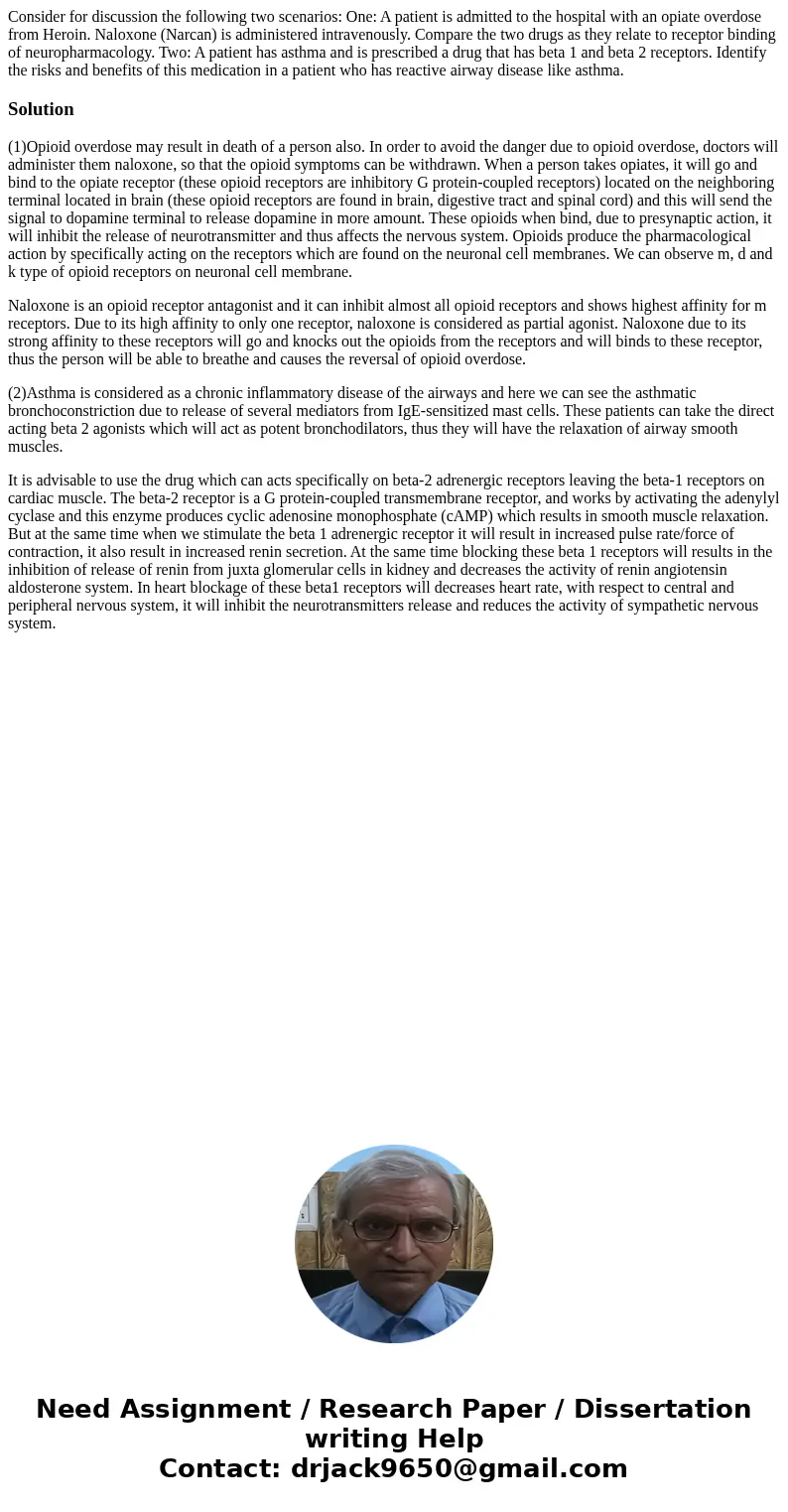Consider for discussion the following two scenarios One A pa
Consider for discussion the following two scenarios: One: A patient is admitted to the hospital with an opiate overdose from Heroin. Naloxone (Narcan) is administered intravenously. Compare the two drugs as they relate to receptor binding of neuropharmacology. Two: A patient has asthma and is prescribed a drug that has beta 1 and beta 2 receptors. Identify the risks and benefits of this medication in a patient who has reactive airway disease like asthma.
Solution
(1)Opioid overdose may result in death of a person also. In order to avoid the danger due to opioid overdose, doctors will administer them naloxone, so that the opioid symptoms can be withdrawn. When a person takes opiates, it will go and bind to the opiate receptor (these opioid receptors are inhibitory G protein-coupled receptors) located on the neighboring terminal located in brain (these opioid receptors are found in brain, digestive tract and spinal cord) and this will send the signal to dopamine terminal to release dopamine in more amount. These opioids when bind, due to presynaptic action, it will inhibit the release of neurotransmitter and thus affects the nervous system. Opioids produce the pharmacological action by specifically acting on the receptors which are found on the neuronal cell membranes. We can observe m, d and k type of opioid receptors on neuronal cell membrane.
Naloxone is an opioid receptor antagonist and it can inhibit almost all opioid receptors and shows highest affinity for m receptors. Due to its high affinity to only one receptor, naloxone is considered as partial agonist. Naloxone due to its strong affinity to these receptors will go and knocks out the opioids from the receptors and will binds to these receptor, thus the person will be able to breathe and causes the reversal of opioid overdose.
(2)Asthma is considered as a chronic inflammatory disease of the airways and here we can see the asthmatic bronchoconstriction due to release of several mediators from IgE-sensitized mast cells. These patients can take the direct acting beta 2 agonists which will act as potent bronchodilators, thus they will have the relaxation of airway smooth muscles.
It is advisable to use the drug which can acts specifically on beta-2 adrenergic receptors leaving the beta-1 receptors on cardiac muscle. The beta-2 receptor is a G protein-coupled transmembrane receptor, and works by activating the adenylyl cyclase and this enzyme produces cyclic adenosine monophosphate (cAMP) which results in smooth muscle relaxation. But at the same time when we stimulate the beta 1 adrenergic receptor it will result in increased pulse rate/force of contraction, it also result in increased renin secretion. At the same time blocking these beta 1 receptors will results in the inhibition of release of renin from juxta glomerular cells in kidney and decreases the activity of renin angiotensin aldosterone system. In heart blockage of these beta1 receptors will decreases heart rate, with respect to central and peripheral nervous system, it will inhibit the neurotransmitters release and reduces the activity of sympathetic nervous system.

 Homework Sourse
Homework Sourse